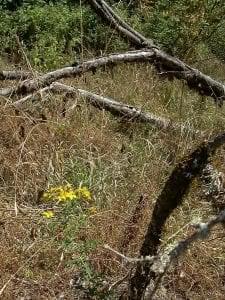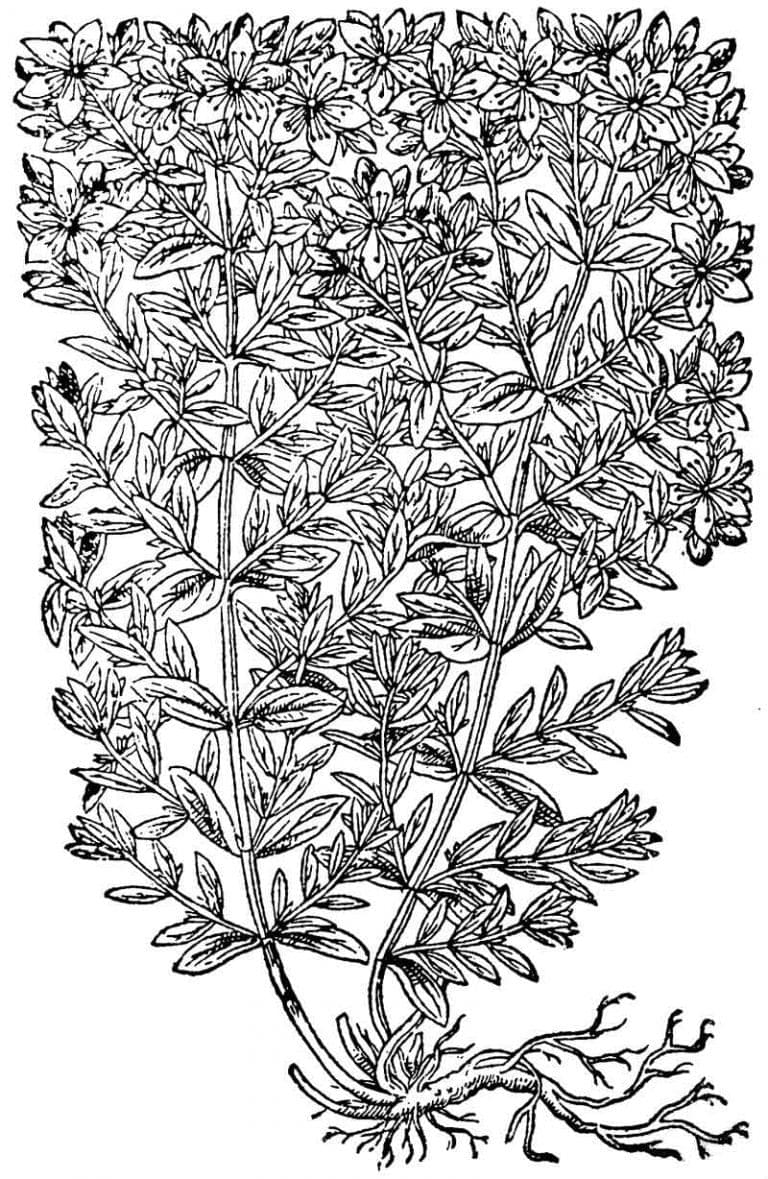Known by many other names before the Christian church dedicated it to Saint John the Baptist, Saint John’s wort has served to drive out illness and evils of many forms worldwide for centuries. In ancient China it was known as Qian Ceng Lou and was used to treat many of the same complaints it still does today. The ancient Greeks and Romans used it for similar medical complaints, but they also made use of its magical qualities. Saint John’s wort was a common offering to local Greek and Roman gods and goddesses left at the feet of their statues.
From Russia to England, Europeans used Saint John’s wort to cure a variety of illnesses and to drive out illness of mind and spirit. Oil of Saint John’s wort was commonly called the blood of Christ and was used both in healing and as an anointment during religious ceremonies.

Christian tradition held that Saint John’s wort flowers, with their five petals that resemble a halo, represented the sun and sunlight. That, plus the fact that it blooms right at the solstice, linked Saint John’s wort with the Christian Saint John who is said to symbolize light.
The red spots on Saint John’s wort’s foliage are said to mimic stigmata in part because they are only seen on mature plants, those that are ready to be picked, just as the stigmata only show on those who are ready for a life of intense service to Jesus Christ.
In magic, Saint John’s wort was used in a variety of ways to banish evil spirits, such as demons, ghosts, and poltergeists. For these purposes, flowers were gathered on Midsummer’s eve and passed through the smoke of the night’s celebratory fire to purify them.
They were combined with other herbs or used on their own in amulets, charms, and talismans. Saint John’s wort was hung above icons of Saint John, much as the ancients laid them at the feet of their gods and goddesses, to invoke the saint’s protection. Saint John’s wort was also hung above doorways, on bedposts, and worn to protect against the evil eye and to drive away calamity including storms, tornadoes, and all manner of harmful beings.
As a divination tool, Saint John’s wort was used to determine longevity. It was said that fresh sprigs of Saint John’s wort blossoms hung near the bed overnight could show whether the sleeper would live through the year. Wilted flowers did not bode well for that person’s longevity. Saint John’s wort was also used by maidens to divine whether a husband may find his way into their lives within the year. To this purpose, the blossoms were placed under the pillow so they might inspire dreams of a future love or mate.
For More Information on Saint John’s Wort

- Gardening and Gathering
- Animal Husbandry
- Household Formulas
- History, Folklore, Myth, and Magic
- Cautions
- Recipes
- Quick Facts
- References
Proceeds from sales of The Practical Herbalist’s Herbal Folio series go toward supporting The Practical Herbalist website. Support this terrific reference site by buying your copy of Saint John’s Wort: Antidepressant and So Much More today.







